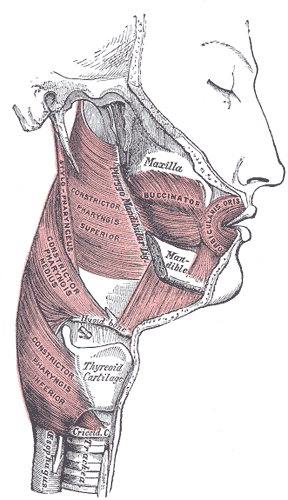| Buccopharyngeal fascia | |
|---|---|
 Carotid sheath outlined in red | |
 | |
| Details | |
| Identifiers | |
| Latin | fascia buccopharyngea |
| TA98 | A04.1.04.010 A05.3.01.116 |
| TA2 | 2211 |
| FMA | 55078 |
| Anatomical terminology | |
The buccopharyngeal fascia is a fascia of the pharynx. [1] It represents the posterior portion of the pretracheal fascia [2] (visceral fascia). [3] It covers the superior pharyngeal constrictor muscles, and buccinator muscle. [4]
